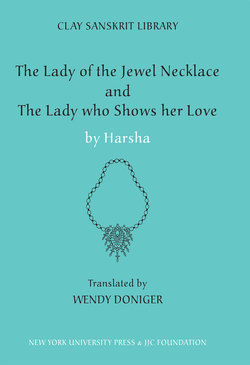Читать книгу The Lady of the Jewel Necklace & The Lady who Shows her Love - Harsha - Страница 34
На сайте Литреса книга снята с продажи.
Оглавлениеbeen given to Udayana first, Vasava·datta quickly takes the lead when Udayana takes her physically from her father.
Harsha borrows his plots but expands on them, as he himself says, in the stage director’s voice, at the start of both ‘The Lady of the Jewel Necklace’ and ‘The Lady who Shows her Love’:
His majesty Shri Harsha has composed a play called ‘The Lady of the Jewel Necklace’/‘The Lady who Shows her Love,’ graced by an unprecedented arrangement of the plot.
Sylvain Levi criticizes Harsha for stealing his plot(s) from Kali·dasa’s ‘Malavika and Agni·mitra’ (Malavikagni- mitra), though in fact there is a far closer link to Bhasa’s ‘Vasava·datta in a Dream’: where Kali·dasa’s play has much the same plot, but different characters, Bhasa’s has not only the same plot but the same king and queen. Indeed, by these criteria, Harsha even plagiarized himself, taking the plot of ‘The Lady who Shows her Love’ from ‘The Lady of the Jewel Necklace.’ But surely this is the wrong way to think of it. Rather, Harsha was playing new variations on an old theme.
The particular dramatic form of Harsha’s plays is that of the minor comedy called a natika (the stage director explicitly identifies it as such), and every natika must follow the same general outline: it is a four act play with many female characters, including a heroine (of royal birth) who is in love with the king and a queen who gives her consent in the end. Its principal mood should be erotic. It most closely corresponds to a romantic comedy in the English theatrical tradition. (The play within a play in ‘The Lady who Shows ________
